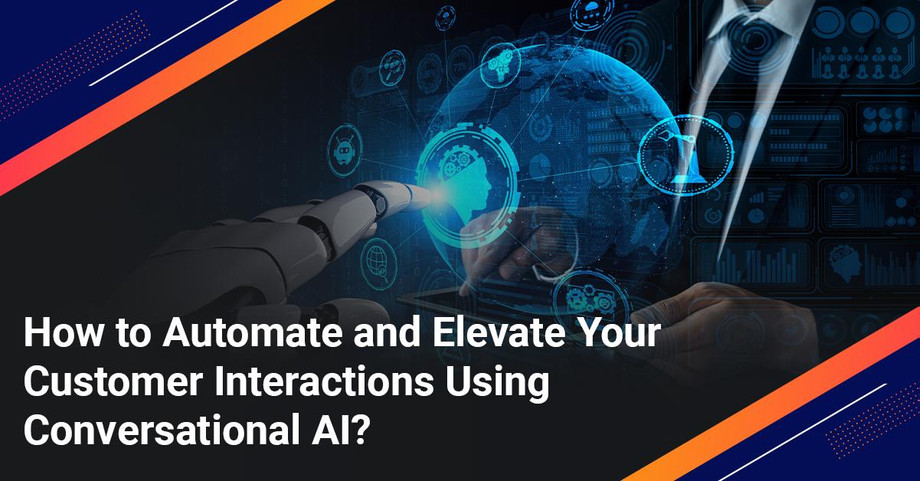The customer experience is the lynchpin for the success of any digital offering. In the era of competitiveness, businesses are vying with each other to get a bigger pie of customers and revenues. However, given the heightened customer expectations for quality software products and services, brands are under pressure to perform. They need to create personalized customer experiences and elevate interactions using technologies such as conversational AI. For the past few years, the customer support function has been disrupted by conversational AI solutions. It is believed that AI services for customer interactions will reach $15 billion in revenue by 2024. Also, around 20% of customer interactions are expected to be handled by conversational AI bots by 2022.
Enterprises can utilize artificial intelligence services in the form of bots to provide personalized engagements, respond promptly to customer queries, and drive higher operational efficiency. In this blog, we look at the benefits of deploying bots based on AI engineering and how such bots can boost customer satisfaction. But first, let us understand what conversational AI is all about.
What Is Conversational AI?
Conversational AI is an overarching term to define a set of technologies that run speech-enabled bots and automated messaging applications. By offering human-like interactions between customers and computers, the technology enables machines to grasp and respond to customer queries. It recognizes text and speech to derive intent in a way that is typical of human conversations. Leveraging AI ML services can elevate customer interactions to such a level that customers do not feel short-changed, which is often the case with primitive chatbots. It can offer an omnichannel customer experience straddling channels such as the web, Facebook, WhatsApp, and in-app.
Conversational AI can be offered over voice and text and allows businesses to perform a host of activities. These include upgrading data plans, blocking credit cards, filing insurance claims, and others. It can engage customers with experiences that can be truly game-changing. It can perform tasks that involve making judgments just like human beings. With machine learning capabilities, conversational AI can execute a process based on a contextual understanding. Offered over voice and text across a range of devices and platforms, it is much broader in scope thanks to its NLP capabilities.
How Does an AI-ML-enabled Conversational Bot Help Businesses?
The below-mentioned segment describes how conversational bots can help businesses elevate customer interactions:
24 x 7 query resolution: In the absence of any human intervention, conversational AI can respond to queries instantaneously, thereby boosting conversion rates. It leads to better customer engagement and satisfaction, reduces negative experiences with long response times, and has a positive impact on brand reputation.
Address customer preferences: The worst thing to experience as a customer is to wait for a simple query to be responded to for long, let alone resolved. However, with AI-enabled chatbots, customers can get their queries resolved quickly, hence the preference for such bots over phone calls.
Better customer engagement: Pitching by bots is a big no. However, conversational AI bots, through an engaging AI framework, can mimic human encounters, thereby improving customer retention rates and augmenting business growth.
Scalability: Human-powered customer centers cannot manage queries beyond a certain threshold. Deploying additional resources can be time and cost-intensive, which most businesses can rarely afford. Conversational AI can be scaled up to meet the threshold as and when needed. It can easily handle humongous levels of queries without adding to the costs. Besides, it can free up human resources and allow businesses to deploy them for high-priority tasks.
Omni-channel CX: The customers of today use myriad devices and platforms for communicating with businesses. This can be a nightmare for customer service agents who need to reach out to customers in their preferred medium. Imagine a customer dropping a query on one medium and following it up on another. Human customer service agents can get big time confused tying up customer information across devices or media. Conversational AI, on the other hand, can address such issues given its ability to associate customers with relevant details across devices and media. Furthermore, it can differentiate between new customers and existing ones easily.
Lead generation: Conversational AI is capable of analyzing and sifting through massive volumes of customer data. This allows businesses to focus on potential customers and optimize response time.
Conclusion
To succeed in today’s highly competitive environment, businesses or brands need to provide best-in-class customer services. Conversational bots leveraging artificial intelligence services can elevate customer interactions and turn them into brand loyalists.

